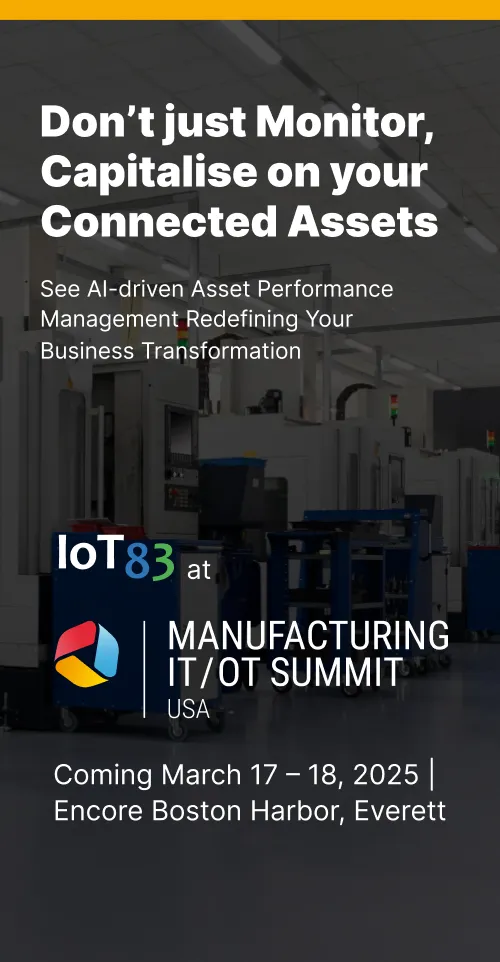An Industry Cloud Platform (ICP) is a specialized environment that integrates cloud services tailored to industry-specific functionality. It enables organizations to leverage the power of cloud computing while addressing their operational requirements. For OEMs and enterprises, customization vs standardization within an ICP is essential.
Customization allows businesses to tailor the platform to their unique production processes and product development cycles with unique features, configurations, and integrations, thereby enhancing efficiency and competitiveness. It further helps in addressing niche market demands, foster customer loyalty, and differentiate their offerings to increase customer satisfaction and long-term profitability by delivering precisely what customers want and need.
Meanwhile, standardization ensures consistency, quality, uniform processes, components, systems, and compliance with industry regulations at reduced costs. It streamlines operations, reduces complexity, and facilitates seamless integration with other systems and partners. Standardization simplifies maintenance, enhances interoperability, and accelerates time-to-market, making it a practical choice for OEMs looking to optimize efficiency and cost-effectiveness in a competitive marketplace.
Together, customization and standardization enable OEMs to innovate rapidly while maintaining robust operational control and adherence to industry standards.
Key Factors to Consider: Standardization vs Customization
When deciding between standardization vs customization, businesses need to evaluate several key factors:
- Scalability: Standardization in solutions typically offers greater scalability, allowing OEMs and enterprises to expand their operations without extensive reconfiguration. Customization makes solutions potentially more adaptable to specific needs, which may require significant investment to scale.
- Cost: Standardized IoT platform price can be more effective initially, providing out-of-the-box functionality that reduces development time. Customization, however, can lead to higher upfront costs due to the need for tailored development.
- Time to Market: Standardized solutions can expedite deployment, enabling faster time to market. Conversely, custom solutions might delay this due to longer development cycles.
- Flexibility: Custom applications offer greater flexibility, allowing OEMs to adapt the solution precisely to their needs. Standard solutions, while more rigid, ensure consistency and reliability.
- Maintenance: Standardized solutions generally offer easier maintenance and updates as the vendor supports them. Custom solutions may require ongoing development support and maintenance from in-house teams or third-party providers.
3 Best Options for Purpose-Built Industrial IoT Applications
Standardization vs Customization is a critical part of Industrial IoT application development, and OEMs as well as Enterprises have several paths to consider, each with its unique benefits and trade-offs:
1. Build In-House Applications
OEMs and Enterprises build their own Industrial IoT solution as they get the power to precisely tailor various applications to shape and serve flexible, unique manufacturing processes. You can closely align with existing systems and processes that work together seamlessly.
When it gives you a 100% customization opportunity, it limits the standardization. It undermines your ability to standardize operations and leverage the associated efficiencies. Also, you may face integration challenges with existing systems and compatibility issues with solutions provided by your vendors.
With an in-house strategy, you may end up with Standardization vs Customization challenges like:
- Need for highly skilled resources
- High initial costs
- Long development cycles
- Resource-intensive maintenance
- Scalability challenges
- Risks of ending up with substantial technical debt
- Potential integration issues
- Poor time to market
2. Buy a Traditional IoT Platform
Buying a commercial Industrial IoT platform ensures OEMs maximize standardization and compatibility with standard industry systems. You get a ready-to-use, out-of-the-box solution that comes with full-tech support. This approach includes faster deployment, reduced development costs, and often comprehensive support and updates from the vendor.
However, it also results in limited flexibility, potential challenges in integrating with existing systems, and may not meet all specific needs without additional customization.
You will have to put more effort into adapting to the vendor's solution and fitting your processes into their solution when it should be the other way around. Your solution should be developed precisely to fulfill your organizational needs. The biggest question is: How will you differentiate yourself from your competitors with the same technology? With a buy strategy, you may end up with Standardization vs Customization challenges like:
- Limited customization
- Vendor lock-in
- Integration challenges
- Poor competitive advantage
- Potential hidden costs
- Lack of flexibility
3. Strike the Right Balance with an AIoT Platform
Choosing the best approach involves carefully assessing the specific needs of businesses, resources, and strategic goals to solve the Standardization vs Customization problem. Here are 3 guidelines to help make this decision:
Evaluate
- Goals you want to achieve with the Industrial IoT solution
- How it aligns with overall business objectives
- What should be the iot platform price that suits your budget
- Time to Market
Benefits
- The potential return on investment
- Faster deployments
- Vendor support and maintenance
- Regular updates and enhancements
- Reduced resource burden
- Scalability and flexibility
- Improved integration with existing systems
- Access to the latest technology
Strategize
- Develop a phased implementation approach
- Monitor platform performance continuously
- Plan for future scalability and upgrades
- Research and select the right leasing provider
- Evaluate customization options available
- Plan for seamless integration with existing systems
Flex83, the AIoT Platform with pre-built microservices, core SDKs, over 40 modules for various functions, AEP APIs, and models, UI/UX design libraries, components, and edge agents, offer an innovative approach to accelerating time-to-market (TTM) for Industrial IoT solutions.
OEMs and Enterprises can use this infrastructure-as-Code (IaC) foundation to streamline the development of system management, data handling, and generic IoT and specialized OEM applications such as APM, ARM, predictive/preventive maintenance, and inventory management solutions. This specialization speeds up the IoT development process significantly and maintains a balance between standardization and customization.
No more Standardization vs Customization! Businesses can leverage standardized components for core functionalities while customizing specific modules and interfaces to meet their unique requirements. This approach enhances efficiency and reliability and fosters innovation by freeing resources to focus on product differentiation and business model evolution. It ultimately enables faster transitions and unlocks substantial benefits for OEMs in today's competitive landscape.
Conclusion
The choice between standardization vs customization in Industrial IoT platforms is pivotal for industrial OEMs aiming to optimize efficiency and meet specific operational needs. Customization allows OEMs to tailor solutions precisely to their production processes, enhancing competitiveness and customer satisfaction through unique features and integrations. Conversely, standardization ensures consistency, quality, and compliance with industry standards, streamlining operations and accelerating time-to-market.
Finding the right balance, such as through Flex83 platform that integrates pre-built microservices with customizable options, empowers OEMs to innovate while maintaining operational control. This approach not only mitigates integration challenges but also supports scalability and futureproofing. It becomes a strategic asset in steering the complexities of modern industrial environments.
Also read: How building custom IoT solution on Flex83 AIoT Platform helped a Telecom giant scale from 5000 files per day to a massive 40,000+ files per day, achieving their goals in one-third of the expected time of completion.






.jpg)

%20(1).jpg)



.jpg)